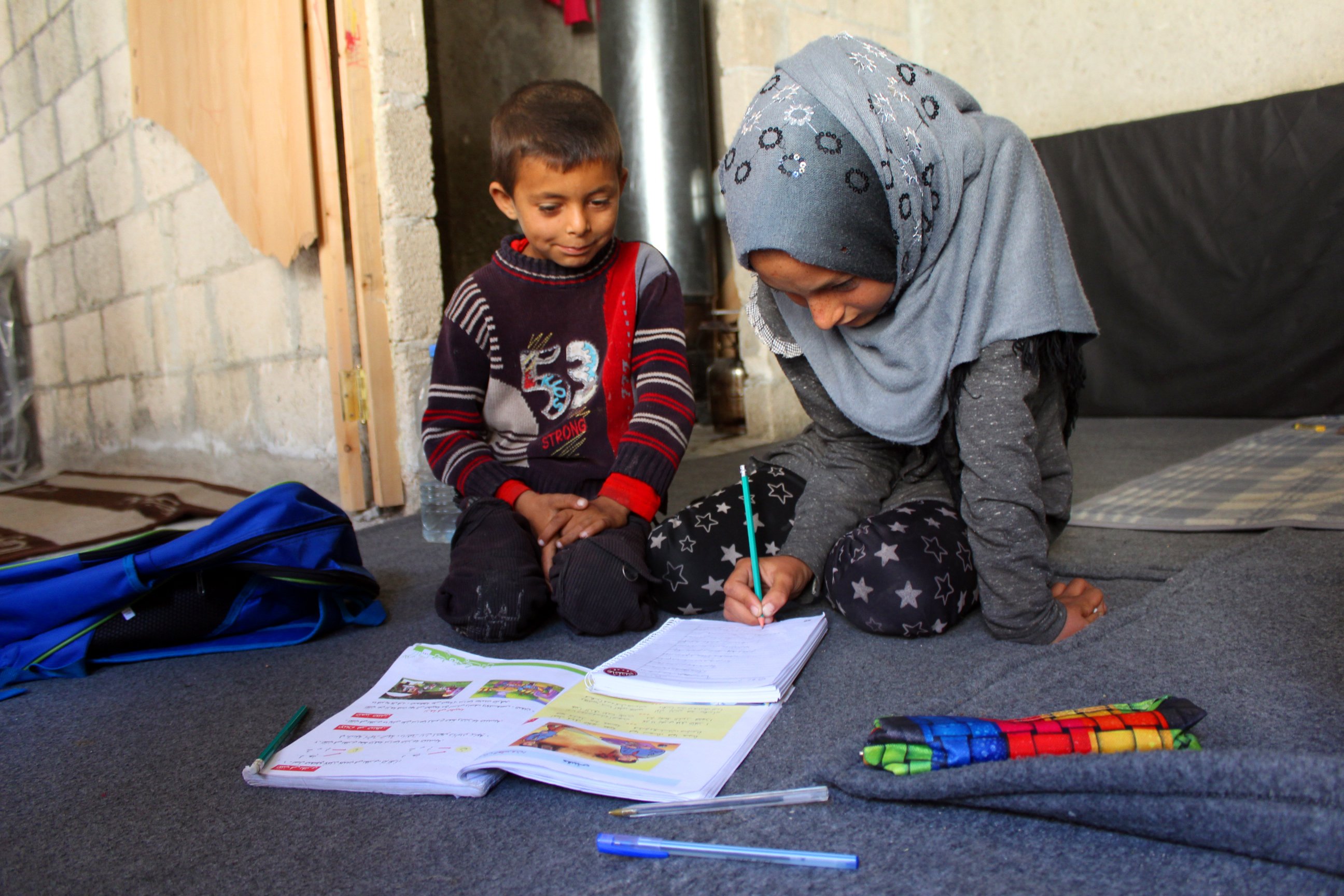UNHCR Syria’s shelter strategy is aligned with the Syria Humanitarian Response Plan and UNHCR’s Global Strategy for Settlement and Shelter (2018-2014). The Strategy was implemented in partnership with 15 governmental and non-governmental organizations across 13 governorates in Syria.
UNHCR’s Shelter Strategy focused on four main areas
- Emergency shelter assistance involves the provision of immediate lifesaving assistance, such as the rehabilitation of public and private collective shelters, the provision of shelter kits, and establishment of camp related infrastructure, as well as the distribution of tents.
- Long-term shelter assistance focuses on the provision of support to those returning to their places of origin, such as repair of damaged houses, and debris removal.
- Capacity building of partners including through trainings and workshops aims to provide UNHCR counterparts with the skills to conduct safety structure assessments for damaged buildings, project management, and technical engineering in emergencies.
- Infrastructure rehabilitation for returnee and host communities includes debris removal, solid waste distribution, minor rehabilitation for water and sanitation in returnee areas, in association with the rehabilitation of the damaged houses.
Despite all challenges, UNHCR managed to reach 456,986 individuals with shelter assistance across the country in 2018.
In 2018, 108,790 internally displaced persons were reached with emergency shelter assistance mainly in response to the Eastern Ghouta and Afrin emergencies, as well as in north-east Syria through the distribution and installation of 8,425 shelter kits, the provision of 6,085 tents, and the rehabilitation of 2,586 emergency rooms in collective shelters. In addition, 6,697 damaged houses were upgraded to support returnee families in rural Hama through the installation of doors and windows. Support to public infrastructure in returnee areas included the implementation of the following activities:
- Removal of 231,527 m3 of debris and distribution of 276 solid waste bins;
- In Dar’a/ Izraa and Hrak, 5 Boreholes and 500 m pipe line were installed targeting 11,500 Persons of Concern (PoC); in the same areas the distribution of 1,105 water tanks was completed, targeting 5,525 PoC.
- Provision of 2,650 solar streetlights;
- Light maintenance for water and sewage networks;
- Enhanced partner capacity through training of 279 technical engineers to conduct technical assessments of damaged buildings.
Shelter Sector Response
The Shelter sector is co-led by UNHCR and the Ministry of Local Administration and Environment (MoLAE). The sector partners include ACF, ADRA, Aoun, Al Birr, Al Ihsan, Al Taalouf, Child Care Society, DRC, GOPA, IOM, MEDAIR, MoLAE, MSJM, NRC, Oxfam, PUI, RSRP, Rescate, SARC, SIF, The Syria Trust, UN-Habitat, UNHCR and UNRWA.
The Shelter Sector interventions include:
- Provision of emergency shelter (installation of tents with infrastructure / shelter kits / winter kits).
- Rehabilitation of public buildings that are used as collective shelters such as schools.
- Upgrading of unfinished private buildings.
- Durable shelter support such as rehabilitation of partially damaged houses and public infrastructures including consideration of housing, land and property (HLP) issues.
- Capacity building support.
In 2018, 518,529 people have been assisted with different shelter interventions by Syria hub partners.

